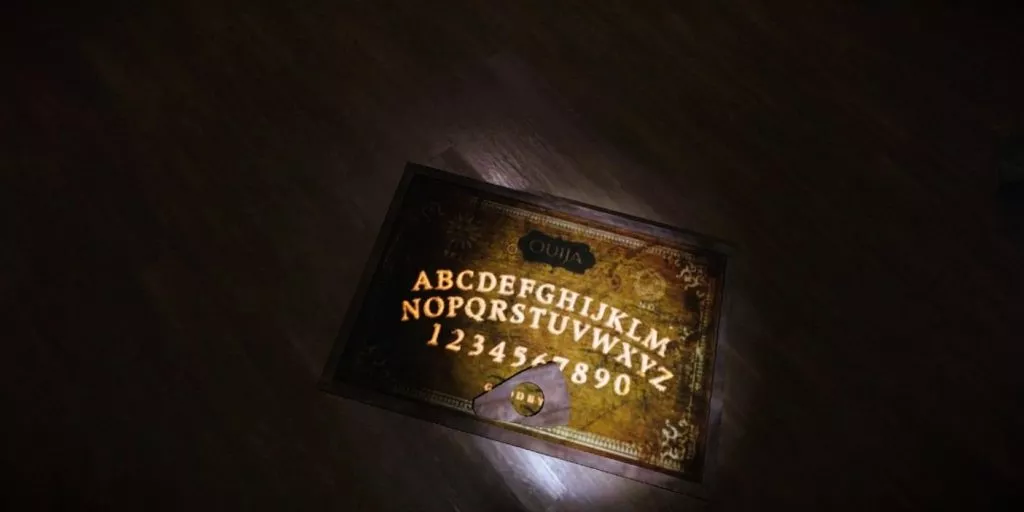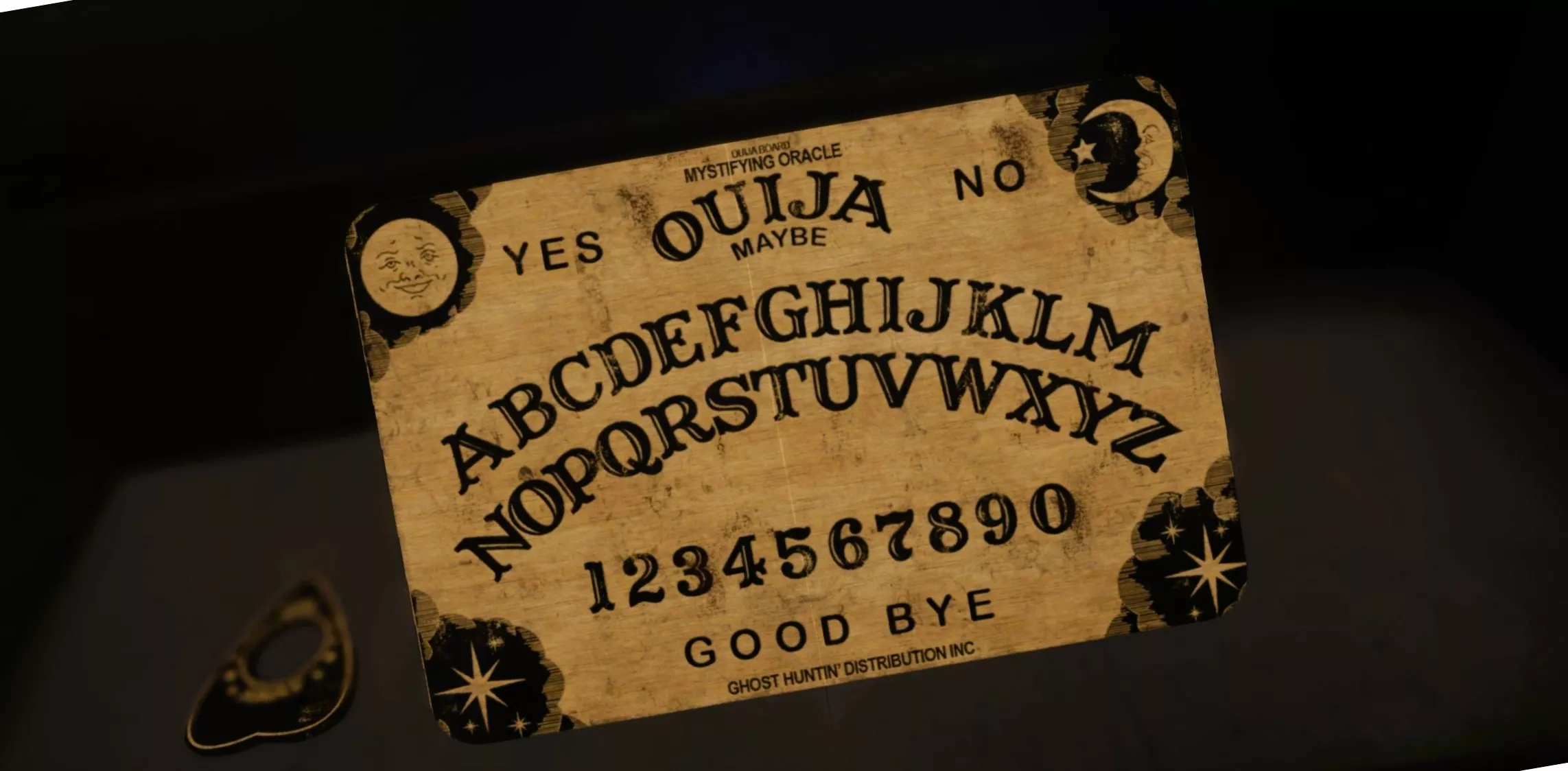In the game Phasmophobia, there exist 7 Cursed Items that players can come across. These Cursed Items offer certain benefits to the player while also providing advantages to the ghost. The ultimate goal is to uncover the identity of the haunting entity at the contract location, allowing everyone to escape with their lives intact. Among the unsettling Cursed Artifacts present in Phasmophobia, the Ouija Board stands out prominently.
The Ouija Board, with its eerie and demonic nature, has troubled paranormal investigators for many years. However, with its inclusion in Phasmophobia, players have the opportunity to utilize their voice chat feature to communicate with the ghost, aiming to engage in interactions. It’s essential to approach Ouija Board queries cautiously in Phasmophobia, as they can lead to serious repercussions. Familiarizing oneself with the proper usage of the Ouija Board in Phasmophobia is crucial to avoid untimely demise and unnerving encounters.
Using the Ouija Board: Instructions

There exists a 1 in 7 probability that the Ouija Board will be discovered within each contract in Phasmophobia. Upon finding it, players have the ability to pick it up just like any other item. This particular Cursed Artifact in Phasmophobia employs voice commands, allowing players to communicate with the Ouija Board for responses. To activate its capabilities, players must position the circle on the board, signifying their readiness to establish a connection with the paranormal realm.
Once the circular indicator is in place, players can pose a question to the ghost, and in response, the ghost will spell out an answer letter by letter. Should players wish to conclude the interaction with the Ouija Board, it’s crucial for them to bid a proper “Goodbye.” This action prevents a potential ghost hunt and even a cursed ghost hunt, which could be triggered if the Ouija Board breaks. This breakage might occur if the player engages with the Ouija Board while possessing insufficient Sanity.
During the process of questioning and receiving answers, the player’s Sanity can deplete rapidly, which significantly impacts the potential for a ghost hunt to occur.
Ouija Board Questions
Within Phasmophobia, players have the opportunity to pose approximately 13 different types of questions to the ghost. Each question yields a distinct response, considering that the ghost type is randomly determined at the start of the contract. It’s worth mentioning that while utilizing the Ouija Board, players can also employ the EMF Reader, as an EMF Level 5 reading could trigger, providing a crucial piece of evidence required for the investigation.
Among the questions that players can ask, some are meant in jest, aimed at gathering information, or even to initiate a prank hunt to tease their friends. Here’s a rundown of every question that can be asked using the Ouija Board in Phasmophobia and their corresponding effects:
While various phrasings of the questions exist, the ones listed below are the fundamental and commonly used phrases that yield consistent outcomes when asked in slightly different ways. This means players can either use the questions as provided or introduce some variation in their wording. As long as the game recognizes the audio as similar phrases, accurate responses should be received.
- “Where Are You?” Asking this question informs players about the ghost’s location. This question consumes a significant amount of player Sanity (50%) due to its effectiveness in pinpointing the ghost’s room. However, it may occasionally lead to misleading information about the ghost’s current whereabouts or roaming behavior.
- “Who Did You Kill?” This question delves into the identity of the victim and the reason behind the investigation. The response mainly provides mission-related lore without much additional insight.
- “Are You Close?” By asking this question, players sacrifice 20% of their Sanity to receive a basic yes or no response. The answer reveals whether the ghost is in close proximity to the player or elsewhere within the house.
- “Where Did You Die?” This question guides players toward a collectible bone that appears in every mission. Asking this question discloses the room where the bone can be located, but it comes at the cost of a 50% Sanity reduction.
- “Hide And Seek” Requesting a game of Hide and Seek from the ghost is a risky endeavor. While it might lead to amusing interactions, the ghost will count down from 5 and initiate a potentially lethal hunt to locate and eliminate players not in hiding.
- “Do You Talk To Everyone?” For a 20% reduction in Sanity, players can inquire whether the ghost engages in communication with everyone. This answer aids in determining the ghost’s sociability, affecting the viability of using the Spirit Box to interact with the ghost.
- “How Old Are You?” Asking the ghost about its age provides an interesting lore element. The ghost’s age can range from 2 to 90 years. This question is particularly enlightening when anticipating a Thaye spirit, as Thaye ghosts age over time, distinguishing them from other ghost types.
- “When Did You Die?” This question results in a 5% loss of Sanity and offers a numeric response indicating the ghost’s age. The number provided can fall between 50 and 1000, shedding light on the ghost’s age range.
- “What Is My Sanity?” Inquiring about one’s own Sanity, at a cost of only 5% Sanity, proves useful before asking more costly Sanity-related questions. It assists players in gauging whether it’s safe to continue engaging with the ghost or if they should seek refuge.
- “How Did You Die?” The ghost’s death can be attributed to various causes. The ghost will reveal the circumstances of its death, with options such as accident, drowned, choked, murdered, shot, fell and slipped. This question depletes 5% of Sanity.
- “How Do You Feel?” While this question might not deceive players, it provides insight into the ghost’s emotional state. The ghost’s responses include cold, empty, strong, weak, angry, sick, or hurt. Despite the response, the ghost remains hostile and will pursue players during a hunt.
- “What Do You Want?” Players can attempt to ascertain the ghost’s purpose, which can be instructive for self-preservation. Although the ghost’s response might include answers like love, scared, revenge, you, hatred, kill, peace, trapped, lonely, or lost, the underlying intention remains to harm.
- Jokes For the sake of humor, players can pose amusing queries to the ghost, deducting 5% of their Sanity. While these interactions don’t have substantial consequences, they offer Easter eggs and enjoyable back-and-forths. For instance, saying “Knock Knock” prompts the ghost to respond with “Who’s there?” Similar interactions occur with “Marco” and “Polo,” but despite the interaction, the ghost remains hostile.
- Miscellaneous Alongside the main question options, several irrelevant questions are incorporated into the game for recreational purposes. Questions like “Are we friends?” might elicit yes or no responses, though either answer carries a sinister undertone implying the ghost’s malevolent intentions.
